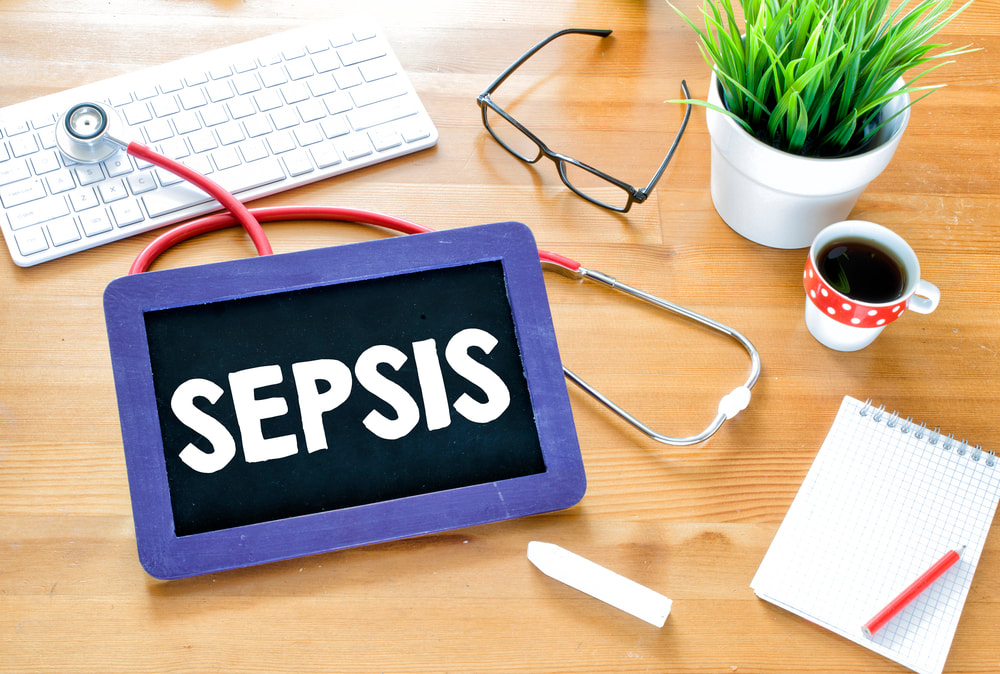What is sepsis?Sepsis occurs due to a reaction to an infection in the body. When you get an infection, your body releases certain chemicals to treat the condition. When sepsis occurs, the chemicals released lead to inflammation, which causes blood clotting and leaky blood vessels. This reaction impairs blood flow to the organs, which leads to organ damage. Basically, your body overreacts to an already present infection. Many types of infections can progress and lead to sepsis, including pneumonia and urinary tract infections. SymptomsSepsis can be a life-threatening condition. Without fast treatment, sepsis can progress and lead to tissue damage and organ failure. Sepsis is also treatable and the sooner the condition is treated, the better the prognosis. That’s why it is essential to recognize the symptoms of sepsis and seek medical care. Symptoms of sepsis may include:
Medical tests may reveal the following:
Sepsis can progress quickly and lead to organ failure. The lungs, kidneys, and liver can all become affected. Once one organ fails, others may quickly follow, which makes the condition hard to treat. Almost all people that develop severe sepsis require care in the intensive care unit. Treatment may include antibiotics, medications to help maintain blood pressure, fluids, and ventilatory support to help with breathing. What increases your risk of sepsis?Most of us occasionally get some type of infection. In the vast majority of cases, the infection does not lead to sepsis. But for about one million people each year, they do become septic. Sometimes, it is not clear why an infection led to sepsis. Even healthy, young adults can become septic. There are a few things that may increase your risk of developing sepsis. For example, babies under the age of one and adults over the age of 65 are at an increased risk of sepsis. People that have a weakened immune system or a chronic illness are also at a high risk of developing sepsis after an infection. How sepsis can lead to vision problemsSevere sepsis is often life-threatening, which is why recognizing signs of the condition is critical. According to the Sepsis Alliance, about 30 percent of people with severe sepsis do not survive. Even when someone survives severe sepsis, it can leave them with permanent medical problems. It is estimated that up to half of people with severe sepsis suffer from post-sepsis syndrome. Complications after sepsis can be widespread. Although not as common as other issues, problems with vision can also occur. Research published in the Journal of Clinical Medicine found some people with sepsis develop an intraocular infection called endogenous endophthalmitis. The infection from the organism that led to the initial infection may spread to the eye. Pain and redness in the eye in a patient that has sepsis requires prompt medical attention to prevent vision loss. PreventionThe best way to prevent sepsis is by reducing your risk of an infection, which may include doing the following:
Sepsis can be a very serious condition. But by reducing your risk of infection and recognizing signs of sepsis immediately, you can decrease your risk of complications. If you think you have any symptoms of sepsis you should seek emergency care immediately. If you have any questions or would like to schedule an appointment, please phone our office at 508-746-8600. Comments are closed.
|
EYE HEALTH BLOGCategories
All
Archives
July 2024
|
|
Kadrmas Eye Care New England
55 Commerce Way, Plymouth, MA 02360
14 Tobey Road, Wareham, MA 02571 133 Falmouth Road (Rt 28), Mashpee, MA 02649 |
Phone Number:
1-508-746-8600 Hours: Monday through Friday — 8 AM – 4:30 PM |


 RSS Feed
RSS Feed
